You no longer have to spend hours thinking about what you are going to post on your social networks. With ChatGPT, You can generate quality content in minutes and focus on other tasks that AI can't yet help you with. Here are some examples that will show you.
Create content on networks with ChatGPT
One of the main advantages of using ChatGPT This is the amount of time and resources you can save in your social media strategies thanks to its great ability to generate content virtually the same way a human would quickly and efficiently. Here are some very specific ideas:
Possible content ideas: Start a brainstorming session with ChatGPT, ask for an motivational quote for a specific target, an idea that answers questions frequently asked by your users, an idea for participation mechanics, whatever you need. For example, if you have an Instagram account that shares cooking recipes, you can use ChatGPT to generate engaging dish descriptions and posts in minutes.
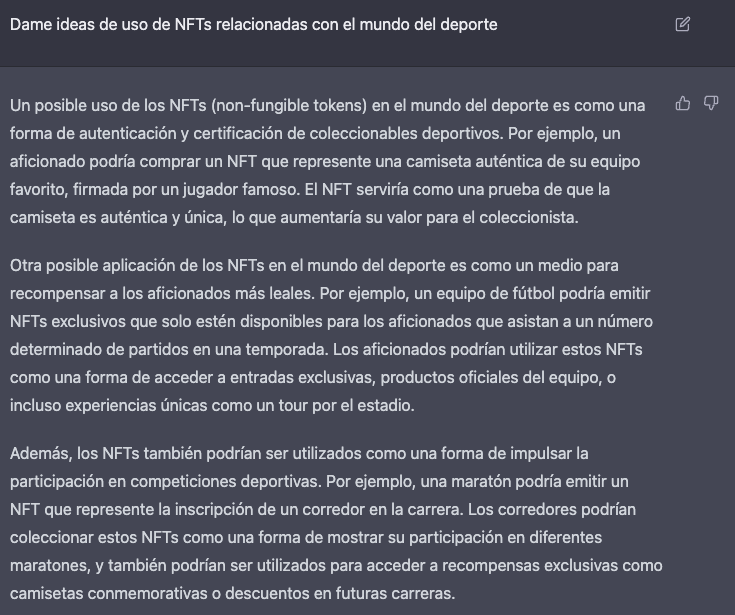
Download format: Do you need a 15″ script for a radio spot? An idea for TikTok? Give ChatGPT the information you need to include and formatting guidelines. Or better: do you already have the download? Try asking him to improve it for you.
Few captions: You can use ChatGPT to generate engaging and compelling descriptions based on your personality, asking you to develop a description add tone adjectives (inspiring, witty, less commercial, without certain words or expressions, etc.).
Another option is that after asking them for an idea, the next step can be to ask them to prepare a caption for it. Tell him the social network, a few requirements and there you go:

Hashtag suggestion: Remember that ChatGPT does not have real-time Internet access, so if you decide to try this use, we recommend that you take inspiration from it and take a look at the hashtag activity it offers to have a better chance of success. Another alternative is to use it to generate branded hastags from scratch, as a brainstorming session.

It will be normal that in all these cases the first idea is not perfect, but you can give it shape by giving new feedback to ChatGPT within the conversation thread itself (“shorten it”, “I want it in form list”, “give me examples”).
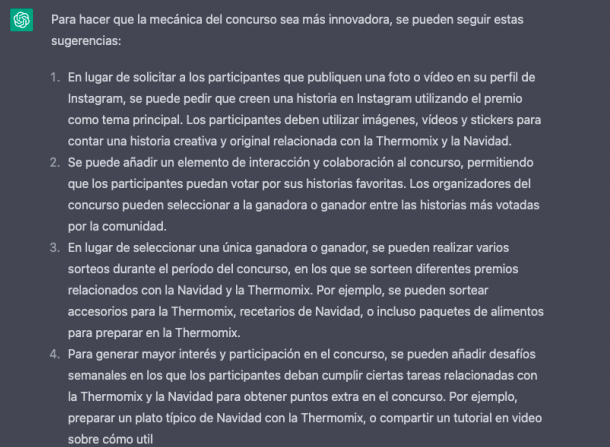
You probably won't even get to a final result. No problem. Another way to use ChatGPT is to use it as inspiration or a basis for future ideas. Maybe 90% of what he comes up with doesn't convince you, but 10% could be the start of a new idea that you might not have thought of.
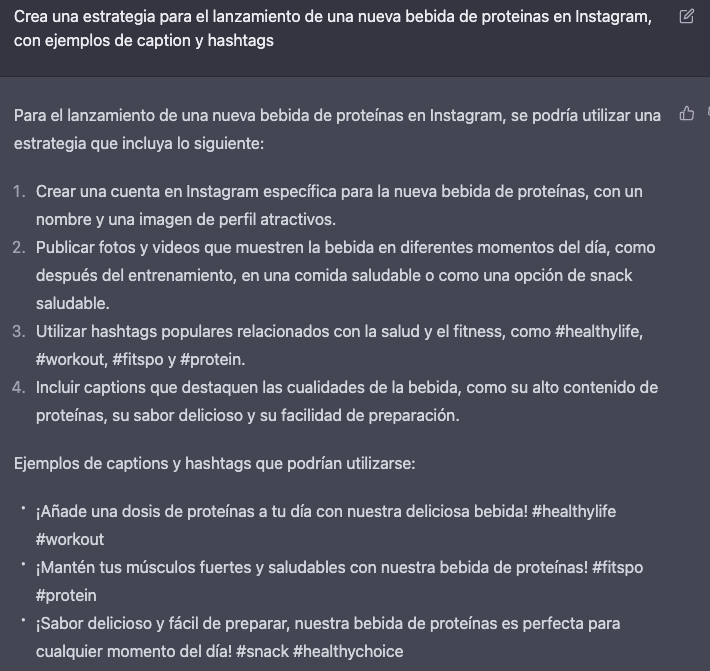
That you have already done the work? Try asking him to improve it:
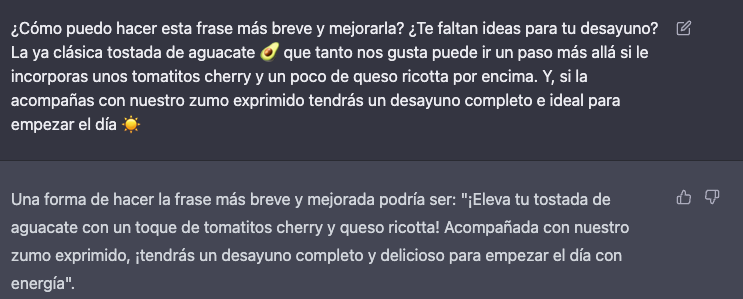
Interact with the public with ChatGPT
Daily revitalization of your community: Another benefit of ChatGPT is that it can suggest how to interact with your audience in a more personalized way based on their interaction history and preferences. This can help you create an active community on your social networks.

Customer Service: ChatGPT can be used to answer frequently asked questions and resolve typical customer issues quickly and efficiently, freeing up human agents to handle more complex cases. If you have a list of FAQs, you can try to see the answer recommendations that ChatGPT gives you.
To conduct surveys and get feedback: ChatGPT could be used to develop surveys to obtain opinions and feedback from users, which could help improve the products and services offered.

Identifying Audience Trends and Opportunities with ChatGPT
The function of ChatGPT is to answer questions and provide general information on a wide range of topics, which is why it can be a new tool to deepen the objective of your strategy.
Define the challenge of your strategy, the questions you need to resolve to be able to develop it and start asking questions to ChatGPT.
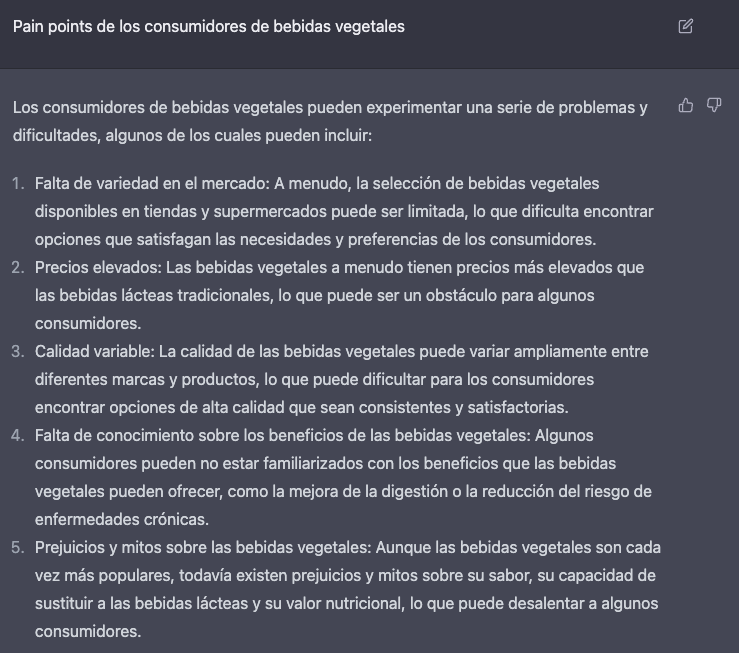
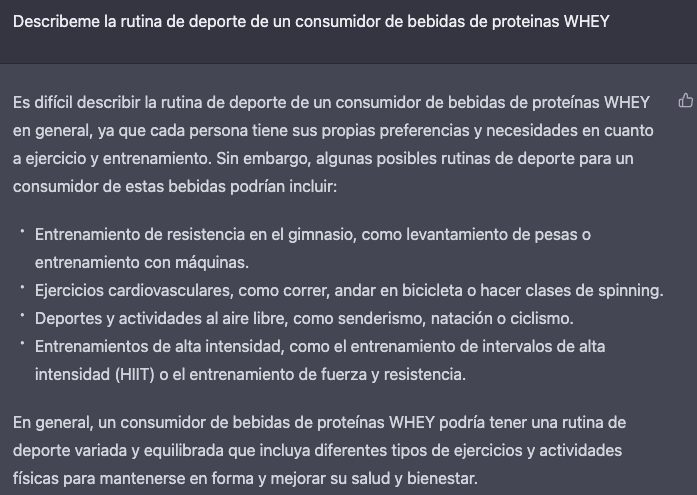
Most importantly: it’s only just beginning. What we've put together is just a list of a few examples of everyday use of ChatGPT on social media, but the real magic is in the exploration, in trying and trying until you find new uses that make your work and life easier. ChatGPT is a tool that you should include in your work routine right now.
PD:
80% of this article was written by ChatGPT itself 😉